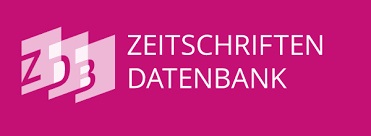Intenciones de turistas potenciales regionales para viajar al estado de Colima, en el contexto pos-COVID-19
DOI:
https://doi.org/10.47557/THLB4755Palabras clave:
COVID-19, destino turístico, sociodemográfico, hábitos, correspondenciasResumen
Este trabajo busca conocer las intenciones de viaje potenciales en el área de influencia turística de Colima, México. Se utilizaron 495 cuestionarios que permitieron desarrollar una base de datos a fin de generar información descriptiva y realizar análisis de correspondencias. Los encuestados muestran cautela de viajar frente a los riesgos sanitarios, la situación económica y la inseguridad. El trabajo se basa asimismo en la literatura académica sobre temas de mercadotecnia, manejo de desastres y competitividad turística. Se formulan propuestas para la recuperación de la actividad turística en Colima al final de la pandemia.
Descargas
Citas
Aldás J. y Uriel, E. (2017). Análisis multivariante aplicado con R. Editorial Paraninfo.
Asociación Mexicana de Agencias de Inteligencia de Mercado y Opinión Pública (AMAI). (2020). ¿Cuántos niveles socioeconómicos hay y cuáles son sus principales características? https://bit.ly/2GH2P8p
Barros, C. y Machado, L. (2010). The length of stay in tourism. Annals of Tourism Research, 37(3), 692-706. https://doi.org/10.1016/j.annals.2009.12.005
Bunghez, C. (2016). The importance of tourism to a destination’s economy. Journal of Eastern Europe Research in Business & Economics, 1-9. https://doi.org/10.5171/2016.143495
Caber, M., Albayrak, T. y Matzler, K. (2012). Classification of the destination attributes in the content of competitiveness (by revised importance-performance analysis). Journal of Vacation Marketing, 18(1), 43-56. https://doi.org/10.1177/1356766711428802
Camilleri, M. (2018). Market segmentation, targeting and positioning. En Travel marketing, tourism economics and the airline product (pp. 69-83). Springer.
Cázares, E. (2020, 5 de agosto). Durante agosto disminuirán vuelos de Manzanillo a Ciudad de México. AF Medios. https://bit.ly/3byR2Ec
Chen, C. F. y Chen, F. S. (2010). Experience quality, perceived value, satisfaction and behavioral intentions for heritage tourists. Tourism Management, 31(1), 29-35. https://doi.org/10.1016/j.tourman.2009.02.008
Chen, C. y Phou, S. (2013). A closer look at destination: Image, personality, relationship and loyalty. Tourism Management, 36, 269-278. https://doi.org/10.1016/j.tourman.2012.11.015
Consejo Nacional Empresarial Turístico (CNET). (2020). Estimación de las afectaciones al turismo mexicano en 2020 como consecuencia de la pandemia del COVID-19, Documento 14 [cuaderno de trabajo]. http://bitly.ws/9CTV
Croes, R. (2011). Measuring and explaining competitiveness in the context of small island destinations. Journal of Travel Research, 50(4), 431-442. https://doi.org/10.1177/0047287510368139
Datatur. (2020). Turismo en México 2020. Secretaría de Turismo. https://datatur.sectur.gob.mx/Documentos Publicaciones/turmx2009.pdf.
Oficina de Asuntos Consulares. (2020) Mexico travel advisory. https://bit.ly/2ZfuFPw
Dolnicar, S., Grün, B. y Leisch, F. (2018). Market segmentation analysis: Understanding it, doing it, and making it useful. Springer Nature.
Dupeyras, A. y MacCallum, N. (2013). Indicators for measuring competitiveness in tourism: A guidance document. OECD Tourism Papers. http://doi.org/10.1787/5k47t9q2t923-en
El Comentario (2020, 1 de junio). Un 12% de los restaurantes del estado ya no pudieron abrir este 1 de junio: Canirac. http://bitly.ws/9CVo
Fondo Monetario Internacional (FMI). (2020). Una crisis como ninguna otra, una recuperación incierta. http://bitly.ws/9CVS
Hanage, W., Qiu, X. y Kennedy-Shaffer, L. (2020). Snowball sampling study design for serosurveys in the early COVID-19 pandemic. Harvard Library Office for Scholarly Communication. http://bitly.ws/9CVL
Ivars, J., Rodríguez, I. y Vera, J. (2013). The evolution of mass tourism destinations: New approaches beyond deterministic models in Benidorm (Spain). Tourism Management, 34, 184-195. https://doi.org/10.1016/j.tourman.2012.04.009
Kotler, P., Bowen, J. y Makens, J. (2014). Marketing for hospitality and tourism. Prentice Hall.
Kuo, H., Chang, C., Huang, B., Chen, C. y McAleer, M. (2009). Estimating the impact of avian flu on international tourism demand using panel data. Tourism Economics, 15(3), 501–511. https://doi.org/10.2139/ssrn.1365228
Mazanec, J. y Ring, A. (2011). Tourism destination competitiveness: Second thoughts on the World Economic Forum reports. Tourism Economics, 17(4), 725-751. https://doi.org/10.5367/te.2011.0065
Monterrubio, J. C. (2010). Short-term economic impacts of influenza A (H1N1) and government reaction on the Mexican tourism industry: An analysis of the media. International Journal of Tourism Policy, 3(1), 1-15. https://doi.org/10.1504/IJTP.2010.031599
Oliver, R. (1999). Whence consumer loyalty. Journal of Marketing [Special issue], 63, 33-44. https://doi.org/10.1177/00222429990634s105
Organización Mundial de la Salud (OMS). (2010). ¿Qué es una pandemia? http://bitly.ws/9CVH
Organización Mundial del Turismo (OMT). (2019). Panorama del turismo mundial 2019. https://www.e-unwto.org/doi/pdf/10.18111/9789284421237.
Pike, S. (2012). Destination positioning opportunities using personal values: Elicited through the repertory test with laddering analysis. Tourism Management, 33(1), 100-107. https://doi.org/10.1016/j.tourman.2011.02.008
Rassy, D. y Smith, R. (2013). The economic impact of H1N1 on Mexico's tourist and pork sectors. Health Economics, 22(7), 824-834. https://doi.org/10.1002/hec.2862
Ritchie, J. B. y Crouch, G. I. (2005). The competitive destination: A sustainable tourism perspective. Cabi.
Salvador-Figueras, M. (2003). Análisis de correspondencias. 5campus.com. http://www.5campus.com/leccion/correspondencias.
Secretaría de Hacienda y Crédito Público (SHCP). (2020). Informe sobre la situación económica. http://bitly.ws/9CVG.
Sheldon, P. y Dwyer, L. (2010). The global financial crisis and tourism: Perspectives of the academy. Journal of Travel Research, 49(1), 3-4. https://doi.org/10.1177/0047287509353191
Svensson, B., Moreno, P. y Martín, D. (2011). Understanding travel expenditure by means of market segmentation. The Service Industries Journal, 31(10), 1683-1698. https://doi.org/10.1080/02642069.2010.503891
Thrane, C. y Farstad, E. (2011). Domestic tourism expenditures: The non-linear effects of length of stay and travel party size. Tourism Management, 32(1), 46-52. https://doi.org/10.1016/j.tourman.2009.11.002
Vu, J. y Turner, L. (2011). Shift-share analysis to measure arrivals competitiveness: The case of Vietnam, 1995-2007. Tourism Economics, 17(4), 803-812. https://doi.org/10.5367/te.2011.0070
Wilder-Smith, A. (2006). The severe acute respiratory syndrome: Impact on travel and tourism. Travel Medicine and Infectious Disease, 4(2), 53–60. https://doi.org/10.1016/j.tmaid.2005.04.004
World Travel & Tourism Council (WTTC). (2019). Crisis readiness. Are you prepared and resilient to safeguard your people and destinations? https://www.globalrescue.com/grmkt_resources/pdfs/Crisis-Readiness-Final.pdf.
Zieba, M. (2017). Cultural participation of tourists. Evidence from travel habits of Austrian residents. Tourism Economics, 23(2), 295-315. https://doi.org/10.1177/1354816616656264
Publicado
Cómo citar
Número
Sección
Licencia
Derechos de autor 2023 Carlos Mario Amaya Molinar, Renato Francisco González Sánchez, Irma Magaña Carrillo

Esta obra está bajo una licencia internacional Creative Commons Atribución-NoComercial-SinDerivadas 4.0.
Todos los contenidos de Dimensiones Turísticas se publican bajo la licencia Atribución/Reconocimiento - no comercial - compartirigual 4.0 Internacional, y pueden ser usados gratuitamente para fines no comerciales, dando el crédito a los autores y a la revista Dimensiones Turísticas. Los artículos anteriores a enero-diciembre 2023 se publicaron bajo licencia Atribución/Reconocimiento - no comercial - sinderivadas 4.0 internacional.












